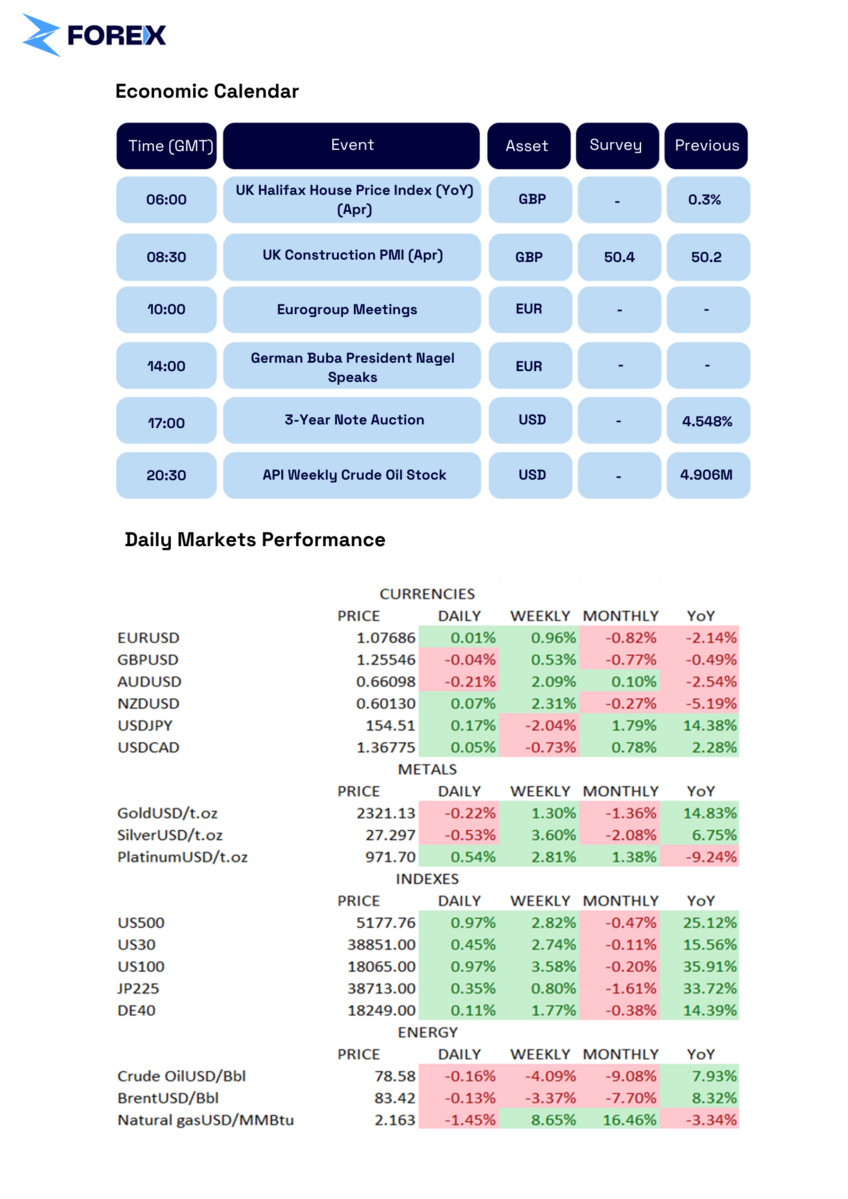Economic Outlook: Financial Markets React to Fed Speculation and Geopolitical Tensions
On Tuesday, gold prices surged beyond $2,320 per ounce, driven by renewed optimism that the Federal Reserve will implement interest rate reductions this year due to disappointing US job growth figures. Furthermore, comments from Fed officials indicating potential rate cuts later in the year provided additional support to gold prices, especially following Fed Chair Powell's relatively dovish statements last week. According to CME's FedWatch Tool, markets now suggest a 64% likelihood of a rate cut in September. Decreased interest rates enhance the attractiveness of holding non-yielding bullion. Meanwhile, investors are closely monitoring developments in the Middle East conflict, with Hamas agreeing to a ceasefire proposal for Gaza while Israel continued its airstrikes in Rafah, citing dissatisfaction with the terms and expressing intentions for further negotiations.
On Tuesday, the dollar index maintained its position above 105 as investors continued to evaluate the Federal Reserve's monetary policy outlook following recent statements from central bank officials. New York Fed President John Williams emphasized that decisions regarding interest rate cuts will hinge on incoming data, while Richmond Fed President Thomas Barkin expressed confidence that inflation will retreat to 2% as the effects of higher rates become evident. The index had dipped approximately 1% last week after the Fed opted to keep interest rates unchanged and Chair Powell dismissed the possibility of a rate hike to address persistent inflationary pressures, reaffirming the central bank's dovish stance despite a timing delay. April's job data revealed a gain of 175,000 jobs, down from the revised 315,000 in March and falling short of the market's expectations of 243,000. Currently, the markets are anticipating a total of 45 basis points in rate cuts for this year, with a November reduction already fully priced in.
The Japanese yen declined once again, falling below 154 per dollar and reversing gains made last week, despite assurances from top currency diplomat Masato Kanda that the government is prepared to address disorderly and speculative-driven foreign exchange movements. However, Kanda refrained from confirming whether Japanese authorities were involved in the suspected intervention last week, during which the yen rebounded by as much as 5.2% from its low. Bank of Japan data indicated that approximately $60 billion was spent in defending the currency. Nevertheless, analysts suggested that this intervention merely bought Japanese authorities some time, as market fundamentals continue to be bearish for the yen. US Treasury Secretary Janet Yellen also remarked over the weekend that interventions should be infrequent and involve consultations, hinting at a lack of coordination between Japan and the US regarding foreign exchange policy.
The Australian dollar fell to around $0.66, retracting from two-month highs after the Reserve Bank of Australia maintained the cash rate at 4.35%, as expected. Despite acknowledging stalled progress in reducing inflation, the RBA offered no explicit hawkish message. Australia's inflation rate dropped to 3.6% in the first quarter from 4.1% previously, exceeding forecasts of 3.4%. Monthly CPI accelerated to 3.5% in March from 3.4% in February, defying expectations of stability.

